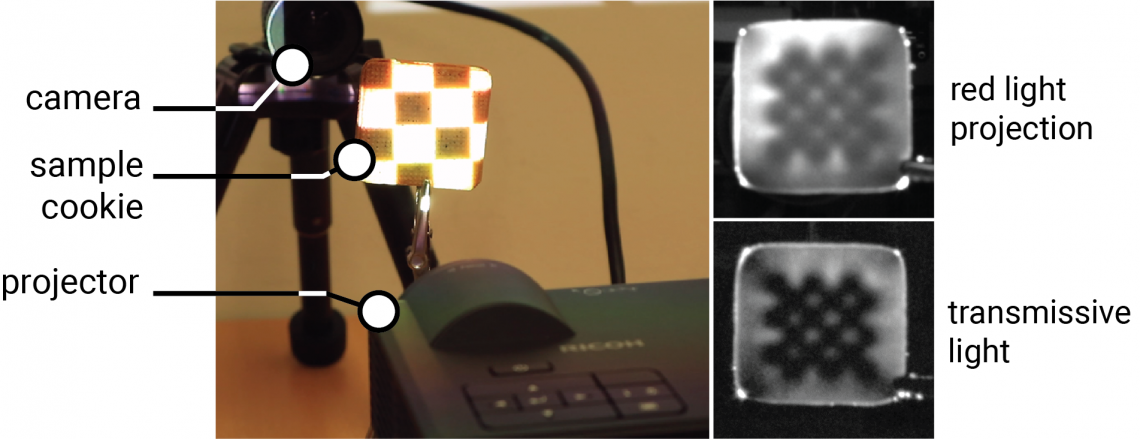Our method utilizing food 3D printer to embed edible data inside food products. So that it is create a new eating experience through this embedding process.
Researchers from Osaka University develop “interiqr”, a novel three-dimensional (3D) printing method of embedding edible QR codes—a type of barcode—in the interior of cookies
Osaka, Japan – There is currently a race to develop edible tags for food so that, for example, you can see where the food comes from or its ingredients, and the information disappears once you’ve eaten it. Now, researchers from Japan have developed a way to include an unobtrusive edible tag embedded inside the food—in their original experiments, cookies—that can be read without having to first destroy the food. Another major advantage of their method, known as “interiqr,” is that the tag doesn’t change the outer appearance or taste of the food at all.
Tags containing data are commonly used in the food industry. They range from the very basic, like stickers on fruit, to the more technological, such as radio frequency identification tags that use electromagnetic fields for the automatic identification and tracking of products. However, as the world attempts to cut back on extra packaging, the race is on to develop edible food tags that are non-toxic, don’t change the food’s flavor or appearance, and can be read without having to destroy the food itself. The research team at Osaka University wanted to address all of these issues.
“Many foods can now be produced using 3D printers,” explains Yamato Miyatake, lead author of the study. “We realized that the insides of edible objects such as cookies could be printed to contain patterns of empty spaces so that, when you shine a light from behind the cookie, a QR code becomes visible and can be read using a cellphone.”
We experiment several internal structures to estimate the optimal solution for the structure that does not change the appearance of the cookie, but still allows the data to be read.
In this way, a QR code that is made of the cookie itself is used as the tag, thereby solving any issues of taste and flavor. Even better, because all of the information is contained inside the food, the outer appearance of the cookie is completely unchanged. And because a simple backlight can be used to make the QR code visible, the information is readily available to producers, retailers, and consumers at any stage of the cookie’s journey from factory to stomach.
“Our 3D printing method is a great example of the digital transformation of foods, which we hope will improve food traceability and safety,” says senior author of the study, Kosuke Sato. “This technology can also be used to provide novel food experiences through augmented reality, which is an exciting new field in the food industry.”
Given that food tags and packaging are a large source of waste worldwide, this new method of embedding edible information into food will also be important for waste reduction. The widespread adoption of such technologies is hoped to pave the way toward a cleaner, more cookie-filled future.
Data readable with reduced light scattering through the high-frequency pattern from the backside irradiation.
###
The article, “interiqr: Unobtrusive Edible Tags using Food 3D Printing,” will be presented at The 35th Annual ACM Symposium on User Interface Software and Technology.
About Osaka University
Osaka University was founded in 1931 as one of the seven imperial universities of Japan and is now one of Japan's leading comprehensive universities with a broad disciplinary spectrum. This strength is coupled with a singular drive for innovation that extends throughout the scientific process, from fundamental research to the creation of applied technology with positive economic impacts. Its commitment to innovation has been recognized in Japan and around the world, being named Japan's most innovative university in 2015 (Reuters 2015 Top 100) and one of the most innovative institutions in the world in 2017 (Innovative Universities and the Nature Index Innovation 2017). Now, Osaka University is leveraging its role as a Designated National University Corporation selected by the Ministry of Education, Culture, Sports, Science and Technology to contribute to innovation for human welfare, sustainable development of society, and social transformation.
Website: https://resou.osaka-u.ac.jp/en





